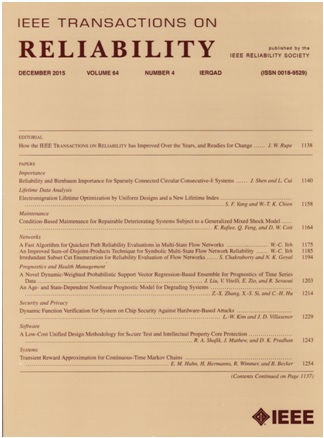Collaborative Cloud-Controlled Defense Mechanism for Low-Carbon Economic Dispatch in Active Distribution Networks Under Interlayer Attack
IF 5.7
2区 计算机科学
Q1 COMPUTER SCIENCE, HARDWARE & ARCHITECTURE
引用次数: 0
Abstract
This article presents a collaborative cloud-based control and defense framework designed to address scheduling challenges and interlayer false data injection (FDI) attacks in a low carbon economy. The proposed framework integrates the principles of low carbon economy strategy and new energy (wind turbine, photovoltaic) modeling to coordinate active and reactive power of distributed generation (DG) using a layered control approach. The framework consists of two main layers: a lower layer and an upper layer. The lower layer combines control and attack defense strategies. State feedback control is utilized to regulate the dynamics of the DG and defense strategies are employed to defend against potential controller FDI attacks. The upper layer, on the other hand, consists of interlayer defense strategies and cloud computing. The FDI defense from the lower control layer to the upper cloud computing layer obtains the actual operating state of the DG. And these data are used for cloud computing to get the next reference power. Cloud computing focuses on multiobjective optimization with the aim of minimizing generation cost, line loss, and bus voltage deviation under low carbon conditions. In order to verify the effectiveness of the proposed control strategy, simulations are conducted on a computer and StarSim hardware-in-the-loop experimental platform. The results show that the framework can effectively manage energy consumption in a low-carbon economy.层间攻击下主动配电网低碳经济调度协同云控防御机制
本文提出了一个基于云的协作控制和防御框架,旨在解决低碳经济中的调度挑战和层间虚假数据注入(FDI)攻击。该框架将低碳经济策略与新能源(风力发电、光伏发电)建模相结合,采用分层控制方法协调分布式发电(DG)的有功和无功功率。该框架由两个主要层组成:下层和上层。下层是控制策略和攻击防御策略的组合。利用状态反馈控制来调节DG的动态,并采用防御策略来防御潜在的控制器FDI攻击。而上层则由层间防御策略和云计算组成。从下层控制层到上层云计算层的FDI防御得到DG的实际运行状态。并将这些数据用于云计算,以获得下一个参考功率。云计算侧重于多目标优化,目的是在低碳条件下最小化发电成本、线损和母线电压偏差。为了验证所提出的控制策略的有效性,在计算机和StarSim硬件在环实验平台上进行了仿真。结果表明,该框架能够有效地管理低碳经济中的能源消耗。
本文章由计算机程序翻译,如有差异,请以英文原文为准。
求助全文
约1分钟内获得全文
求助全文
来源期刊

IEEE Transactions on Reliability
工程技术-工程:电子与电气
CiteScore
12.20
自引率
8.50%
发文量
153
审稿时长
7.5 months
期刊介绍:
IEEE Transactions on Reliability is a refereed journal for the reliability and allied disciplines including, but not limited to, maintainability, physics of failure, life testing, prognostics, design and manufacture for reliability, reliability for systems of systems, network availability, mission success, warranty, safety, and various measures of effectiveness. Topics eligible for publication range from hardware to software, from materials to systems, from consumer and industrial devices to manufacturing plants, from individual items to networks, from techniques for making things better to ways of predicting and measuring behavior in the field. As an engineering subject that supports new and existing technologies, we constantly expand into new areas of the assurance sciences.
 求助内容:
求助内容: 应助结果提醒方式:
应助结果提醒方式:


